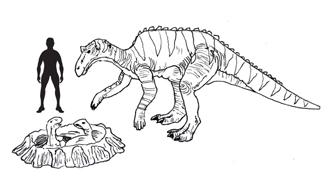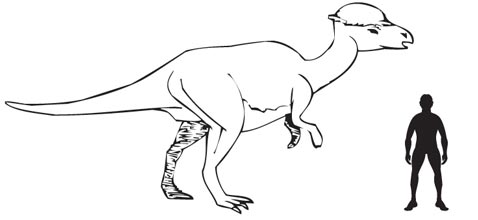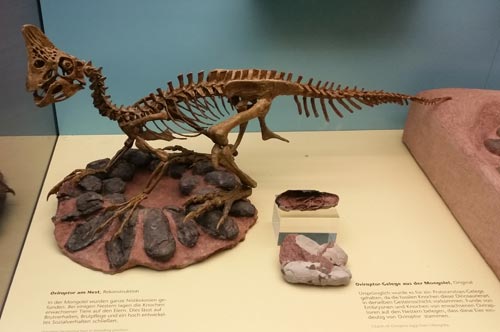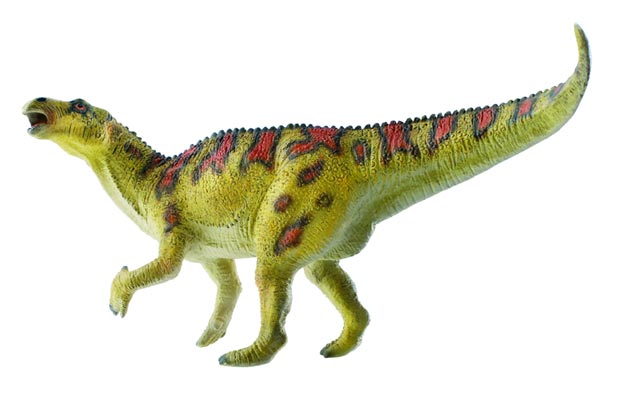Darwinius masillae Ancestor of Lemurs not Humans say Scientists
The debate over Darwinius masillae continues as scientists conclude that “Ida” was an ancestor of lemurs and not hominins.
Ever since the beautifully preserved fossil of 47-million-year-old primate nicknamed “Ida” was revealed to the world, the analysis and interpretation of this fossil has attracted controversy. Heralded at the time as the “missing link” between ancient primates and that particular part of the primate lineage that would eventually lead to our own species, the fossil when it was formerly presented to the world at the American Museum of Natural History (New York) attracted huge interest. However, the claim that this particular fossil represented our ancient ancestor has been already challenged and a new paper published this week supports the view that “Ida” is related to the lemurs and not a direct link to Homo sapiens.
Darwinius masillae
The fossil was originally discovered in 1983, in the famous Messel shales of Germany, a location renowned for superbly preserved early Tertiary fossils. The original specimen was split in half when it was found, as the private individuals who discovered the specimen thought that the part and counterparts of the fossil would make more money if they were sold in separate lots.
These specimens ended up in different museum collections. In addition, in order to enhance the value of one of the plates, it was embellished a little by the restoration team before being offered for sale. Unfortunately, in the world of fossil dealing, this is quite common practice, it is amazing how much value can be added with a bit of a “scrape and a polish”. One part of Ida – the nickname given to the fossil by those scientists who got the chance to prepare the fossil for display, ended up in the USA, the second part was sold to the Natural History Museum of University of Oslo. It was a Norwegian team, led by John (Jorn) Hurum of the Natural History Museum (Oslo) that published the scientific paper claiming that Ida represented a link on the evolutionary history of our species.
One of the comments attributed to Dr Hurum was that Ida represented:
“the closest thing we can get to a direct ancestor”.
To read more about the announcement of the fossil discovery: The Relationship between Hominids and Lemurs – Darwinius masillae.
There was certainly a great deal of hyperbole and publicity when the fossil was revealed to the world at the special media event held in New York last May. Pictures of Ida were published around the world, with the Norwegian scientists being interviewed on national television, A&E purchased the rights to make a documentary and a number of news and media companies signed agreements to cover “Ida” and her story.
Some Examples of Remarkable Messel Shale Fossils
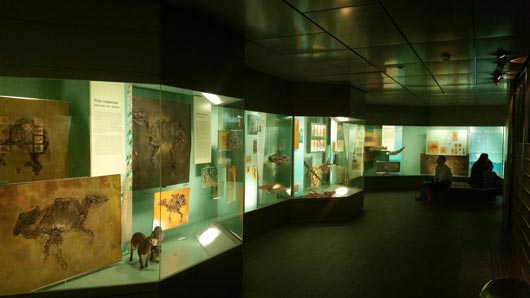
The atmospheric Messel gallery at the Senckenberg Museum (Frankfurt).
Picture credit: Everything Dinosaur
There was even a documentary shown on the BBC, narrated by Sir David Attenborough. The fuss over this particular discovery was quite extraordinary. Although, with the various events scheduled to take place in 2009 to commemorate the 200th anniversary of the birth of Charles Darwin, it was not surprising that this “missing link” would attract such worldwide attention.
However, it was not long before the scientific community, once having had the chance to formerly review the research papers, began to unpick the Norwegian team’s hypothesis
Dr Jens Franzen, an expert on Germany’s Messel shale fossils, questioned the link to humans and stated:
“She belongs to the group from which humans developed, but my impression is she is not on the direct line”.
To read one of the articles, a rebuttle of the Norwegian teams’ work: The Debate over “Ida” Hots Up.
Ida does represent the most complete primate discovered to date, although the light and delicate nature of the fossil and the bones having been crushed during the preservation means that individual portions cannot be handled. Radiographs (x-rays) have revealed a lot of information, for example, the jaw has adult teeth emerging giving an indication of the age of the animal. The pelvic girdle suggests female and so the scientists studying “Ida” have concluded that she was an independent, fully weaned sub-adult that died in her first year of life. She did not possess claws but had nails (just like we do) and would have been quite at home in the trees of the Messel rain-forest.
Ida was approximately 50 centimetres long, half of this length was made up of the tail. If she had reached full adult size she would have still weighed less than 2 kilogrammes. Darwinius masillae is a very significant discovery. It is the most complete primate fossil found to date and will permit scientists to study her life history, diet and locomotion. Undoubtedly, any future study of early Palaeogene primates will benefit from the work done on “Ida”.
However, a new study carried out by scientists based at Duke University, (North Carolina – USA), and published in the Journal of Human Evolution also challenges the conclusions drawn by the first analysis of this fossilised primate.
Visiting Professor of Evolutionary Anthropology Blythe Williams and her colleagues contest the earlier findings and dispute the argument that Darwinius masillae was a “missing link”.
Commenting on the original paper published by Dr Hurum and his team, she stated;
“The problems with the manuscript jumped out immediately. Yes, Darwinius masillae is, indeed, a very complete, 47-million-year-old fossil. But that doesn’t mean it overthrows the incredibly extensive body of research that we have already built up.”
Dr Hurum and his colleagues are believed to be working on a response to rebuff the latest arguments that have been put forward, challenging their earlier findings. It seems that the debate over the fantastically well preserved fossil of Ida is going to run and run. The whole issue has become somewhat blurred as a result of the excessive media interest and indeed the large sums of money thrown at the scientists for exclusive book, film and television rights. When Darwin first published his famous book “The Origin of Species”, it created a Victorian media storm, it seems that more than 200 years after Darwin’s birth a fossil named after him is going to be doing the same thing for some time to come.
Everything Dinosaur stocks a wide variety of prehistoric animal models including replicas from the Eocene. To view this range: Replicas of Prehistoric Mammals.



